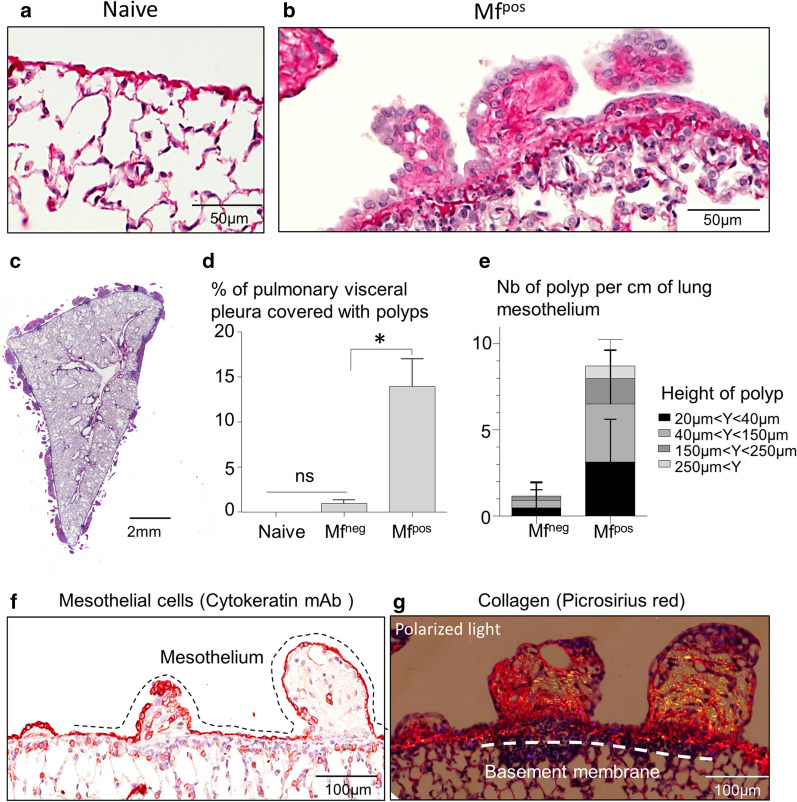Fig. 3.
Lung polyps are rich in collagen and heterogenous in size. Lungs sections from naive and 70 days L. sigmodontis-infected gerbil (n = 19) were stained with hematoxylin & eosin. a Lungs of naive gerbil without pathology. b Polyps on the visceral pleura of Mfpos gerbil; hyperplasic and hypertrophic mesothelium. c Left lung of a Mfpos gerbil covered with polyps. d The extent of the pathology was quantified on the lungs of naive (n = 3), Mfpos (n = 19) and Mfneg gerbils (n = 7). The pathology is expressed as the proportion of the visceral pleura which is covered with polyps. Results are expressed as the mean ± SEM. Kruskal-Wallis followed by a Dunns multiple comparison tests: *P < 0.05 represent difference between naive and Mfneg and Mfpos. e Polyps were characterized according to their height - small (20–40 µm), intermediate (40–150 µm) and large polyps (>150 µm) - and quantified (number of polyps/cm of lung mesothelium) in Mfpos (n = 19) and Mfneg (n = 7) gerbils. Results are expressed as the mean ± SEM. f Mesothelial cells (red) stained for cytokeratines. View of different development size of polyps. The dashed line shows the mesothelial layer. g Collagen fibers stained with picrosirius red. Polarized light observation of polyps reveals fibrosis. The dashed line shows the basement membrane

